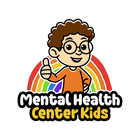A study published in Healthcare looked for a way to help kids feel less scared and stressed when they need treatments that involve needles, like getting an IV. Here, researchers used a special virtual reality (VR) program that showed relaxing nature scenes while guiding kids through deep breathing exercises. They tested this with 21 children, ages 8 to 12, during their IV treatment at a hospital.
The results were very encouraging. The kids’ stress levels dropped when they used the VR relaxation app, no matter how afraid they usually were of needles or medical procedures. The researchers measured stress by checking the kids’ heart rates, which clearly showed less anxiety.
Also, none of the kids had any negative side effects from using the VR program. This study matters as it helps doctors and nurses do their work more easily and makes treatments less frightening for children.
Understanding the Research
The researchers wanted to see if using a virtual reality (VR) program that combines calming nature scenes with guided deep breathing helps reduce kids’ stress in a hospital setting.
They chose this approach because traditional methods, like giving medicine or simply distracting the child, can have risks or may not work for every child. VR is new, cost-effective, and free from side effects.
The study was conducted in a local hospital in Finland and involved 21 young patients between the ages of 8 and 12. Researchers used an app called VirNE (Virtual Natural Environments), which provided guided breathing exercises set in immersive, 360-degree natural environments.
The children were allowed to choose their preferred virtual setting — such as a forest or lakeside — and select an avatar or opt for audio-only instructions.
To see how well the method worked, the researchers collected two kinds of information:
- First, they asked the children questions, talked to them, and took notes on what the nurses saw during the sessions.
- Second, they used a tool to measure the children’s heart rate before and after using the app. This showed whether the children were more relaxed or less stressed after the breathing exercise.
These were the main findings:
- Most children (16 out of 21) reported a positive experience using the virtual reality (VR) relaxation app. They found the deep breathing exercise easy to follow and said it helped reduce their nervousness.
- The HRV results showed a clear increase in parasympathetic activity and a decrease in sympathetic activity during the VR intervention, which indicated reduced stress and increased relaxation.
- The stress-reducing benefits of the VR method appeared consistent across different groups, regardless of previous experience with VR, breathing exercises, or past medical procedures.
- Children with higher initial anxiety, needle phobia, or no prior experience with cannulation benefited more.
- No children experienced simulation sickness or other negative side effects.
It’s important to note that not all participants found the experience helpful, and a few showed no HRV improvement.
Practical Strategies for Parents and Caregivers
What if you don’t have access to virtual reality tools? How can parents and caregivers still help children manage their anxiety during medical procedures like needle treatments? Here are some methods you can try right at home or in a hospital setting.
Do deep breathing together
Even without VR, guided breathing can calm a child’s nervous system. Teach your child to take slow, deep belly breaths. Inhale through the nose for 4 counts, hold for 2, then exhale through the mouth for 5-8 seconds. Practice together at home and remind them to use this technique during procedures.
Practice through play at home
One effective way to ease a child’s fear of medical visits is to turn playtime into a learning experience. You can use dolls, stuffed animals, or action figures to role-play common medical procedures like taking their blood pressure or checking their temperature.
Through repeated role-play, your child can be desensitized to the idea of doctor visits, so they may feel safer and more confident when it’s time for the real thing.
Plan something to look forward to after the procedure
Giving your child something positive to anticipate after a medical procedure can make a big difference in how they experience the entire event. This can be as simple as stopping by their favorite park or enjoying a treat like ice cream.
Let them choose the reward ahead of time so they feel more in control and have a reminder that something fun is coming.
The researchers are also suggesting that more studies need to be done with bigger, more diverse groups of children. This is to help confirm the method’s usefulness, especially in children with higher anxiety levels.
Want to teach your child how to stay calm during stressful moments? Check out our Coping Skills Worksheets and Stress Management Worksheets.





















































